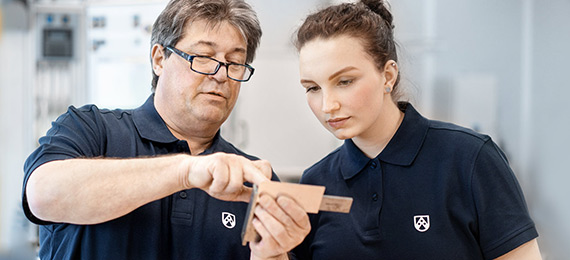The digital product passport for final components
Identification is the extension of authentication. When the marker particles are added to the starting material in the first step of the SmartMarker® process, a random and thus unique pattern is created by the random distribution of the SmartMarker® particles. This makes it counterfeit-proof. The product now has a unique label that is anchored in the material and used to uniquely identify it. This unique identifier serves as a unique identifier for uniquely linking the product to a product passport. This means that the product passport can be opened any time and can be provided with various product information. This product information can be accessed digitally and does not have tobe physically attached to the product.
















